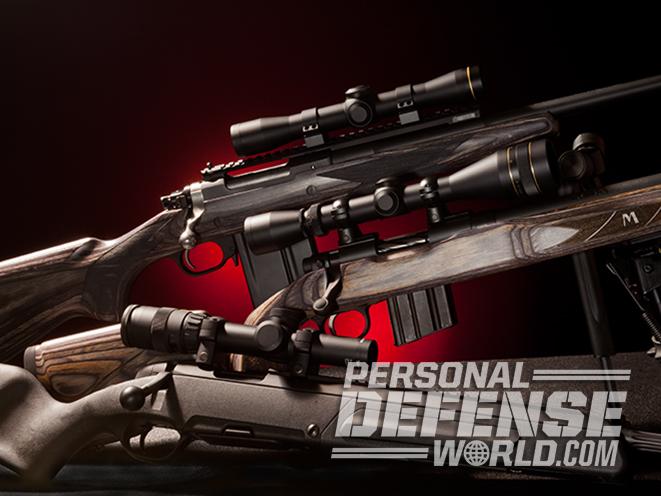The scout rifle as we know it has its origins in the 1960s. At that time, the father of the modern technique of the pistol and Gunsite Academy (originally the American Pistol Institute) founder Jeff Cooper was working with various carbines, including the Winchester Model 1894, Mannlicher-Schoenauer, and Remington Model 600. He was attracted to these rifles because of their handiness and suitability at filling a general-purpose role.
The Remington Model 600, to which he attached a forward-mounted, long-eye-relief riflescope, became his pick and what he began to refer to as “Scout I.” A decade or so later, Cooper codified and conceptualized the scout rifle. He envisioned the scout rifle as a gun perfectly suited to someone working remotely and alone as a hunter or military scout. As Cooper saw it, this rifle was never intended to be used by a member of a fire team. Also, its forte was not volume fire. It was to be a rifle ideally suited to the general-purpose role. In other words, it should do almost anything anyone needs to do with a rifle—and do it well.
Scout Rifle Specs
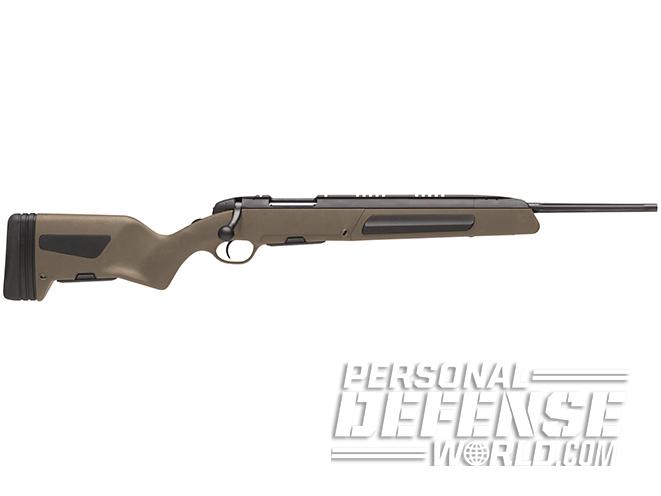
Advertisement — Continue Reading Below
Cooper considered friendliness to be an important aspect of the scout rifle. That is, it should point naturally, be easy to handle and be ideally adapted to the snap shot. Further, he set forth an elemental description of how he believed the optimum scout rifle should be configured. And although he was not opposed to a semi-automatic, there was not a semi-auto light enough to meet his specifications, nor is there one now. Additionally, Cooper believed the scout rifle should be usable worldwide, and semi-automatics are forbidden in some locations. During a 1983 conference at Gunsite, the definition of a scout rifle was established.
RELATED STORY: Bolt-Action Rifle – Getting Primed For The Hunt
It had to be a bolt-action rifle in .308 Winchester. (The 7mm-08 was considered acceptable where military cartridges could not be owned, and the .243 was allowed for folks who were recoil-sensitive.) The rifle’s maximum length was 1 meter, and it had to wear a forward-mounted, low-powered, long-eye-relief optical sight. Ghost-ring sights were also required for backup duty. The rifle had to be fitted with a C.W. or Ching sling and possess a good trigger. Importantly, the rifle had to be lighter than 7 pounds with a scope, sights, a sling, and an empty magazine installed. It had to have an ideal weight of 6.6 pounds. Two more features were desirable but not mandatory: a provision for storing ammo on or in the buttstock and an integral, collapsible bipod.
Cooper wrote prolifically about the scout rifle concept with the hopes of convincing a manufacturer to build one. He also worked with gunsmiths at Gunsite to develop various prototypes. Of those, Scout II, or “Sweetheart,” was the most famous. It was the rifle used by an engineer from Steyr Mannlicher when he visited Cooper at his ranch in Paulden, Arizona, in 1990. That led to Steyr agreeing to design and manufacture a rifle meeting Cooper’s scout rifle specifications. Seven years later, the Steyr Scout rifle was introduced. Cooper anointed it as the best personal weapon in the world.
Advertisement — Continue Reading Below
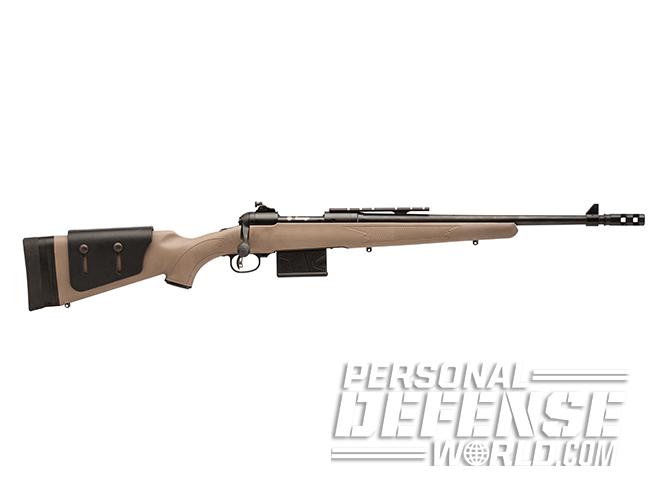
The Steyr Rifle
The Steyr Scout rifle was a radical, innovative concept. It could be argued that it’s the pinnacle representation of the general-purpose rifle. The problem was, at $2,100, it cost too much for the average guy who might consider a one-rifle answer. Folks with that kind of cash seemed to prefer rifles built for specialized tasks and pursuits. So, as ideal as the Steyr Scout was, sales languished, and it seemed only those worshiping Col. Jeff Cooper became Steyr Arms’ customers.
Savage Arms entered the scout rifle market with its take on Cooper’s concept. Although the company’s rifle was moderately successful, it was really nothing more than a standard Savage bolt action with a provision for the mounting of the forward optic, which became known as a scout scope. The high prices of the Steyr, the lack of uniqueness of the Savage and the new-millennium madness surrounding the AR-15 seemed to push the scout rifle concept into extinction.
Advertisement — Continue Reading Below
Enter the Ruger GSR
But in 2012, Ruger surprised the world by introducing the Gunsite Scout Rifle, or GSR. Admittedly, the Ruger GSR does not adhere to every element of Cooper’s scout rifle concept. According to Gunsite instructor Ed Head, who worked with Ruger on the project, that was not the intent. Ruger’s goal was to offer a modern general-purpose rifle based on the scout rifle concept—a rifle that would have broad appeal. It could not have been more successful. The Ruger GSR, in all of its many variants, is one of the best-selling rifles in the company’s line.
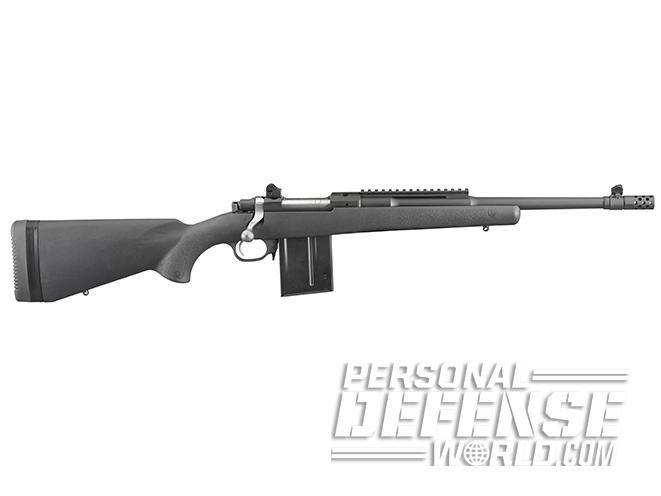
We can speculate about why, after 20 years, there seems to be a scout rifle revival. It could be that many folks interested in the utility of a general-purpose rifle have become bored with the AR platform. Maybe from a prepper or survivalist standpoint, the lack of complexity associated with a simple bolt-action rifle makes more sense. Or, perhaps Cooper, his concept and Steyr were about two decades ahead of their time. Whatever the reason, interest in scout-style rifles is at an all-time high.
Advertisement — Continue Reading Below
Not only are there more commercial scout rifles than ever, but there’s also a suitable selection of scout rifle accessories, including speed slings and scout scopes.
Gunsite Revival
Because of the popularity of scout rifles, it seemed ideal to again have a conference to discuss and help further understanding of the concept. Unlike the first conference, which was intended to define parameters, this was more of a revival. We invited manufacturers, gun writers, and scout rifle experts to spend three days training, one day competing and testing, and a final day discussing the state of the scout rifle as it stands today.
Our goal was to help manufacturers make better scout rifles and inform the uninformed about the immense utility of the guns. What is that utility? How can a rifle conceptualized so long ago have a place in the modern world of firearms? Sheer simplicity is a major aspect.
Advertisement — Continue Reading Below
The .308 Winchester can accomplish most of what any rifle shooter needs. I’ve used it to shoot critters like prairie dogs and and large game like elk and moose. For many years, the .308 Winchester was also considered the ideal precision and even long-range rifle cartridge. Inside 800 yards, the .308 Winchester performs very well. Let’s face it, at that distance, most of us can’t hit anything smaller than an outhouse with regularity.
RELATED STORY: The 12 Commandments of Rifle Shooting & Deadliness
The long-eye-relief scout scope has become emblematic of the scout rifle. And even though ultra-compact reflex and red-dot sights seem to be all the rage, those who have tried them realize the limitations imposed by the lack of minimal magnification. The scout scope, with its limited or variable magnification, offers an ideal balance of snap shooting and medium- to long-distance capabilities like no other optic. Remember, the concept was for a general—not specific—purpose rifle.
Other features of commercial scout rifles are also appealing, such as their reserve ghost-ring sights, threaded muzzles, compatibility with high-capacity detachable magazines, and their ruggedness and reliability. The modern scout coincides with the popular prepper mindset. They are Katrina rifles, survival rifles or even apocalyptic end-of-days guns that are uncomplicated to operate, service and shoot.
Advertisement — Continue Reading Below
Compactness and light weight are also prime hallmarks of the platform. Admittedly, some of the modern commercial scout rifles fall outside of Cooper’s weight and length restrictions. But, for the most part, they embrace the spirit of the concept. They make for good truck or UTV rifles that are easy to transport, comfortable to carry and swift to get into action.
Aside from the practical application and common sense of the concept, scout rifle accessories that were difficult to find or almost non-existent a decade ago are now readily available and in more variations. Burris, Hi-Lux, Leupold, Vortex and Weaver offer scout scopes of fixed or variable power. Andy’s Leather and Galco offer excellent renditions of the Ching sling or similar speed slings. Hornady has a wide selection of ammunition ideal for any scout rifle application.
Here To Stay
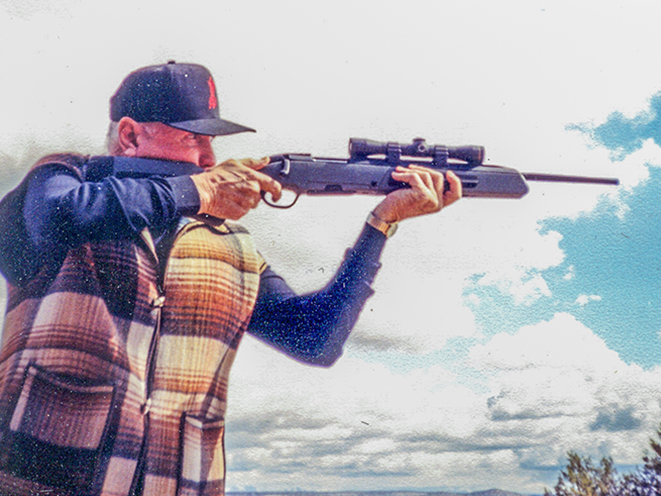
Advertisement — Continue Reading Below
The world has changed from when Cooper envisioned the scout rifle. A world that once seemed stable has transitioned into one of uncertainty. Its inhabitants have learned that in times of crisis, they are their own first and possibly only line of defense. A scout rifle fills that niche. It’s a weapon system that can be legally owned and taken almost anywhere in the world.
No wonder this rifle has a revived appeal. It was clear at the 2016 Scout Rifle Conference that the learned participants in attendance found the concept ideally suited to the modern world. In fact, some doubters left with their minds changed. I believe we will continue to see new interpretations and even an evolution of the original concept. Scout rifle purists might scoff at the slightest deviation from Cooper’s vision. In the end, it’s all about the shot and the rifle that can help you make the widest variety of shots in the best, easiest way. The scout rifle is here to stay.
Editor’s Note: Richard Mann’s The Scout Rifle Study offers a comprehensive look at the history of the scout rifle and its place in the new millennium. This is the first major firearms publication to be offered in a free-access web format. For more information, check out thescoutrifle.com.
Advertisement — Continue Reading Below
